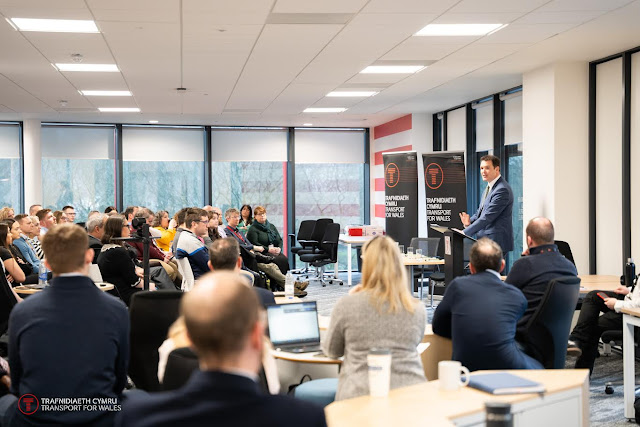Are Councils making the most of digital?
So as part of an attempt to open up with work of the panel on Digital transformation that I'm leading for the Welsh Government I'm blogging what we're up to and thinking about
I'm conscious that there's already quite a bit of analysis out there on the state of digital in local government and the health service. In my last post I revisited David Jones' report from 2015, and in this post I'm looking again at the report on the digital maturity of Welsh councils.
In April 2017 digital consultants Socitm advisory published the findings of their research on digital maturity in Welsh local authorities. They assessed how Councils were performing in six ‘digital dimensions’.
When it came to digital transactions - the extent to which citizens can request services from the local authority website - Socitm found that Councils are not keeping up with the expectations of the public. No local authority provides an end to end, seamless transaction for all service requests. Whilst broadly comparable with councils in other parts of the world they said Welsh local authorities’ direction of travel over the last five years is more volatile than the UK as a whole, and lags significantly behind the customer experience citizens now commonly have with the private sector. Whereas sites like Amazon digitise the whole shopping process, from picking a slot convenient to them, adjusting an order, making payment and providing feedback, councils tend to digitise part of the online transaction, like reporting a missed bin collection and the rest of the process remains paper based.
Socitm assessed the digital leadership of authorities. Most Councils do not have a Chief Digital Officer, with many still seeing digital as an offshoot of ICT. They found that digital strategies, where they exist (nearly a quarter did not have one), “do not completely embrace the full potential of the digital agenda”. Councils are not making the most of citizen data to design services, not using digital engagement to co-produce services, and not using open data is not seen as a priority nor is it used as a key enabler. Socitm found that there is too little benchmarking with organisations outside Wales, and whilst there is some good practice, digital excellence will only be sustained where there is a culture change, development of digital skills at every level, and a strategy that is embedded across every level of a local authority.
The appetite for being Smart with Data exists in most organisations the report found, but data maturity is low. ”Big picture, holistic, intelligence based decision making is not well evidenced across the 22 local authorities” Socitm said. Councils manage most data in silos and do not use it effectively to drive faster decision making and service design. The research found ‘substantial appetite’ for more work on data mining and interest in developing a single citizen account portals. However, no local authority volunteered to become part of the GDS (Government Digital Service) pilot for a single system for verifying identities online, preferring to wait for a more mature version of the product, Verify, to emerge.
Citizen oriented design, the fourth digital dimension examined by the report, is where digital services are being designed from the point of view of what citizens want (as opposed to what the local authority thinks they need). Instead of actively involving citizens in redesigning and changing processes from the start to the end, Councils are primarily focused on achieving short-term savings by moving some transactions online (often procured from private sector vendors). Furthermore, in contrast to other parts of the UK, Councils in Wales are making little use of the GDS design framework because of a lack of awareness or capability to use this approach.
Levels of digital exclusion are higher in Wales than in England and need to be addressed through access (network infrastructure initiatives, as well as making equipment available), skills, motivation and trust to maximise levels of digital inclusion. Socitm found this is widely recognised in local authority strategies but despite efforts to provide access to Wifi and computers in public buildings, along with digital learning sessions, digital exclusion remains high across most areas of Wales. They conclude that addressing it is “an expensive ambition’.
The final digital dimension assessed by Socitm was Digital Staff. The report found a lack of evidence that councils were embedding digital skills into their workforce strategies and thinking ahead of the need for digital skills and capabilities in the future. Digitised workflow was present though not mature, and the approach was often driven by property asset strategies to minimise the number of buildings they had manage. Too few were using cloud computing, there was little evidence of the automation of staff processes, such as submitting expenses, nor of the use of digital tools such as Facebook or WhatsApp for collaborating. Socitm said there are likely to be good opportunities for further digitisation of internal processes but 8 of the 22 councils said they did not have sufficient capacity to deliver their digital requirements, The report found some enthusiasm for a central team of digital specialists that could be shared between local authorities to help them grow their own talent in this area.
Socitm report concluded that digital maturity will never be complete as new possibilities emerge in the marketplace any authority that rests on its laurels will drop down the digital maturity ladder. Its potential use in reducing on services is not being exploited and Councils need to think beyond websites and fragmented process digitisation to truly add value, Socitm said.
As part of the research project each Council was given their own results from the Digital Maturity self-assessment tool to review their own strengths and weaknesses, and encouraged to inform the Welsh Government on recommendations they were particularly enthusiastic about. It is not clear if this has happened.
The report made a series of recommendations:
Short term initiatives
Digital events - digital networking and learning events, addressing a CEO and Director audience, as well as Digital leaders and practitioners. These events should not be exclusively Wales focused; they should be used to inject wider thinking and challenge with speakers from other geographies and sectors as well.
Establishing a Virtual Digital Hub (an on-line forum for discussion and document sharing as the foundation to bring together the local authorities around the digital agenda and establishing joint priorities) would support more digital networking events.
Facilitated collaboration There is a need to enable greater collaboration across the local authorities in such areas as:
- Shaping the digital strategy for the nation, helping to inform the Digital First strategy.
- Digital toolkit development or adoption of GDS standards.
- Establishing priority projects; smart data solutions, on line account, account verification.
- Digital skills development.
Longer term considerations
More shared systems - Each local authority is currently investing in their own digital initiatives. With budgets under pressure and a need for savings an investment strategy would accelerate the delivery of the nation’s digital agenda, more common platforms, joined up procurement activities would help accelerate the digital agenda across the local authorities.
Tactical digital solutions - Areas of common platform in the medium term could be the investment in a single tool in the following areas:
- Web chat solutions
- Single email system
- HR, Finance and Payroll systems
- Social media listening and crowd sourcing tool
Digital citizen insights - There is a substantial appetite to deliver collaborative solutions for managing citizen data and delivering citizen insights. As well as providing a better digital citizen experience, this also can drive better service design. There is an opportunity to explore this; to manage this with pooled data at a Welsh citizen level, rather than at an Individual local authority level. Such a project could drive down costs and deliver more citizen insights, as many citizens are citizens of more than one local authority. It could also form the basis of a truly valuable repository of open data. While protecting individual citizen anonymity, such open data could inform planning and regeneration both from a public sector and a commercial provider’s perspective. A collaborative approach to citizen insight, driving down cost and ensuring consistency, would be welcomed by most of the local authorities that participated in this research.
I'd be interested in your thoughts on these finding and recommendations. Are they fair? What do we do about it?



Comments